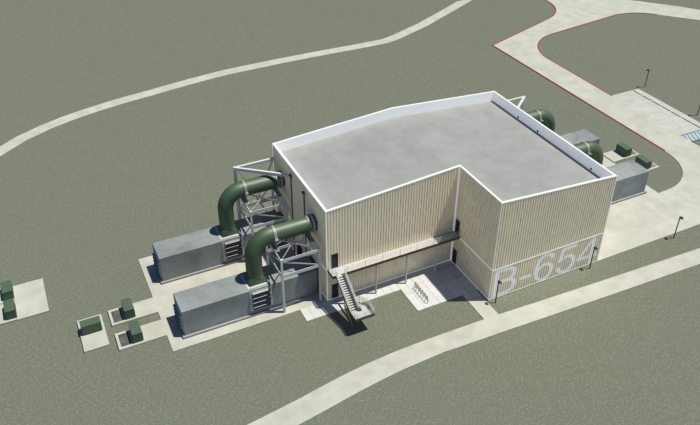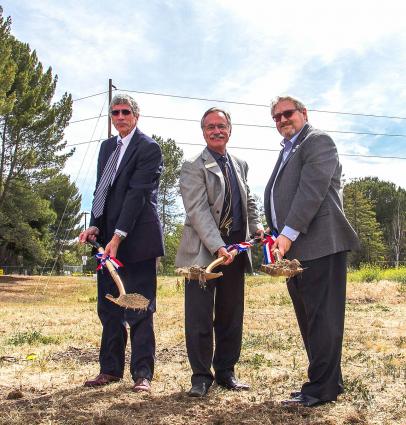Lawrence Livermore breaks ground on unclassified supercomputing facility
 (Download Image)
A rendering of the new dual-level building will consist of a 6,000-square-foot machine floor flanked on both sides by support space. The main computer structure is flexible in design to allow for possible expansion and to accommodate future computer technology advances.
(Download Image)
A rendering of the new dual-level building will consist of a 6,000-square-foot machine floor flanked on both sides by support space. The main computer structure is flexible in design to allow for possible expansion and to accommodate future computer technology advances.
Lawrence Livermore National Laboratory broke ground today on a modular and sustainable supercomputing facility that will provide a flexible infrastructure able to accommodate the Laboratory’s growing demand for high performance computing (HPC).
The $9.875 million building, located on the Laboratory’s east side, will ensure computer room space to support the Advanced Simulation and Computing (ASC) Program’s unclassified HPC systems. ASC is the high-performance simulation effort of the National Nuclear Security Administration’s (NNSA) stockpile stewardship program to ensure the safety, security and reliability of the nation’s nuclear deterrent without testing.
"Unclassified high performance computing is critical to the stockpile stewardship program’s success and the need for this capability will continue to grow," said Laboratory Director Bill Goldstein. "Modernizing the Lab’s computing infrastructure will enable us to better exploit next-generation supercomputers for NNSA by tapping the talents of top academic and private sector partners."
"The ASC Program always has believed that forward-thinking programs depend on labs being healthy and able to engage bright minds in solving tough problems," stated Bob Meisner, NNSA ASC program director. "For this reason, we have encouraged strong unclassified computing environments, which not only build a powerful and broad science and technology (S&T) base vital to the success of stewardship, but also facilitate collaboration with universities like the ASC Alliance Centers, other government agencies and American industry. We also are pleased with the innovative and cost-efficient design, which reiterates the labs’ commitment to sustainable S&T investments."
The new building addresses a pressing need for space designed to accommodate a variety of high performance computing architectures, including water-cooled systems. Computing buildings at Lawrence Livermore range from 10 to 60 years in age and most were not designed to house HPC systems. These aging structures have inherent limitations that make upgrades to their electrical and mechanical infrastructures prohibitively expensive.
The new dual-level unclassified building — to be called Bldg. 654 Livermore Computing Complex — will consist of a 6,000-square-foot machine floor flanked by support space. The main computer structure is flexible in design to allow for expansion and accommodate future computer technology advances. The ceiling height will assure proper forced air circulation and allow for the installation of utilities and HPC systems.
In-house modeling and simulation expertise in energy-efficient building design was used in drawing up the specifications for the facility; heating, ventilation and air conditioning systems will meet sustainable design requirements to promote energy conservation. The flexible design will be able to accommodate future liquid cooling solutions for HPC systems. The building will be able to scale to 7.5 megawatts of computational capacity in the future and was designed so that power and mechanical resources can be added as HPC technologies evolve.
Construction of the building is expected to take about one year. M&W Architects and Engineers designed the facility and WE Lyons is the construction contractor.
Related Links
ComputingAdvanced Simulation and Computing
Related Files
DownloadTags
HPC, Simulation, and Data ScienceNuclear deterrence
Computing
Stockpile stewardship
Featured Articles








